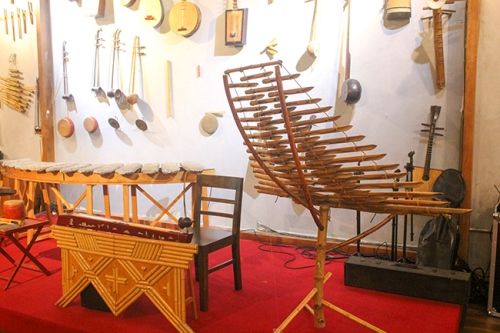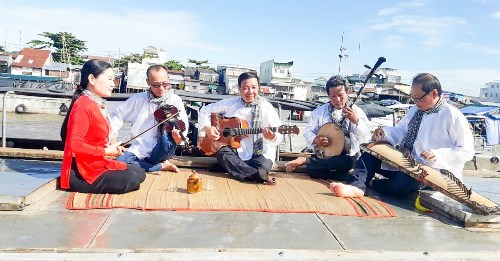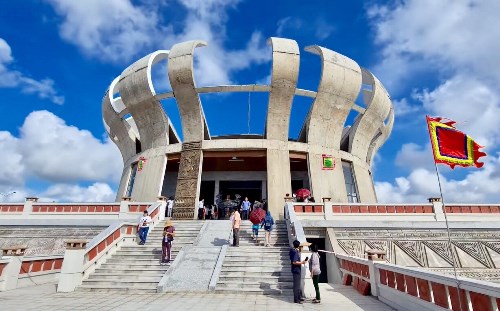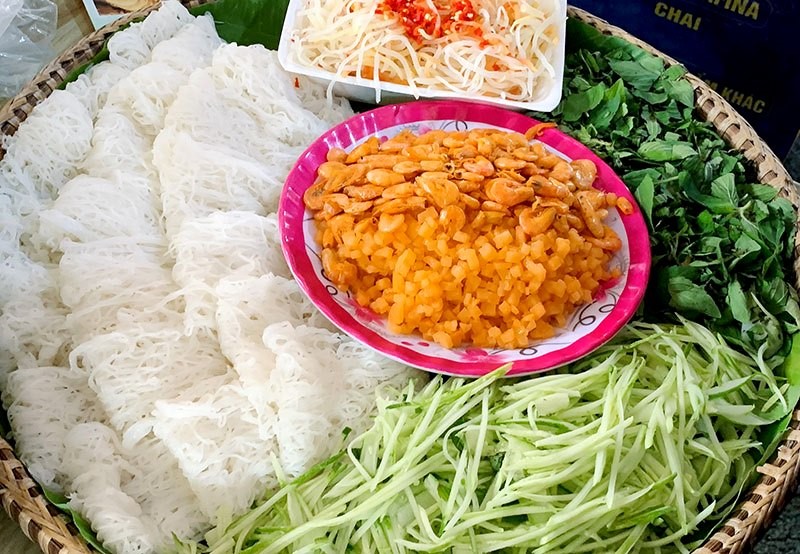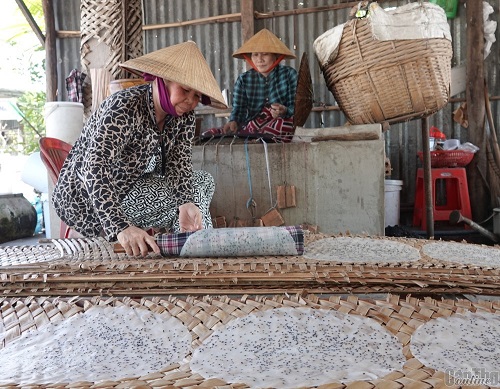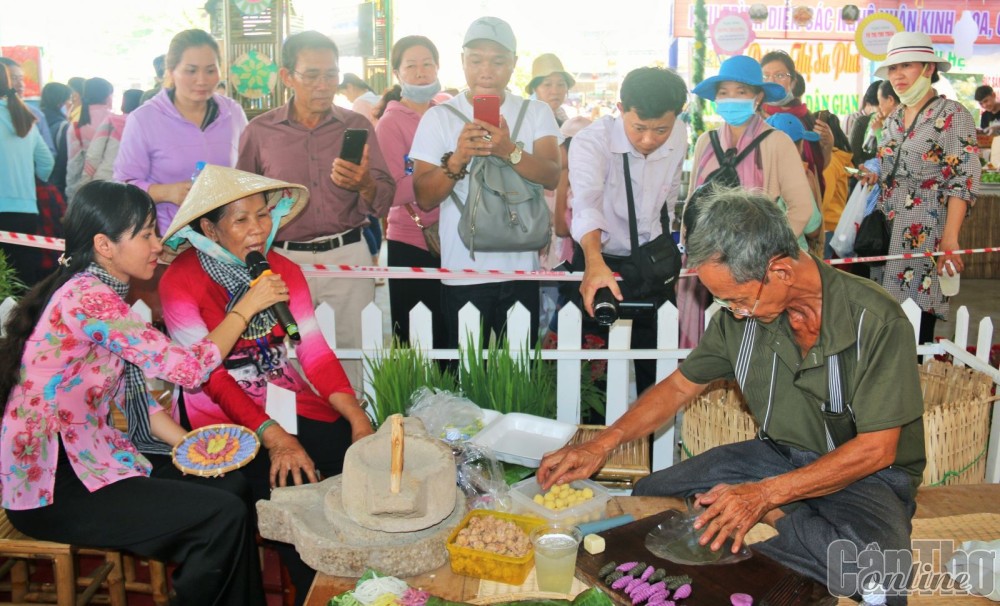
The workshop was attended by Vice Chairman of Can Tho City People's Committee Nguyen Ngoc He, leading experts in the fields of water resources and climate change, representing 7 localities suffering from severe drought and saltwater intrusion, namely Tien Giang, Ben Tre, Tra Vinh, and Hau Giang provinces. Giang, Soc Trang, Ca Mau, Kien Giang, and businesses providing clean water in the Mekong Delta.
The workshop provides a platform for ministries, experts, local communities, and businesses to discuss solutions and share their experiences on how to adapt to drought and salinity in the Mekong Delta. The workshop aims to promote sustainable development in the Mekong Delta, especially in the context of the strong climate change.
According to data from the National Center for Hydro-Meteorological Forecasting, from the second half of December until now, there has been almost no rain in the entire Mekong Delta. Total rainfall during this time is 62-94% lower than the average for many years. With almost no rain and prolonged sunshine, the total flow from the Mekong River is lacking, causing the Mekong Delta to experience a severe drought and saltwater season.
Data from the Southern Regional Hydrometeorological Station shows that saltwater intrusion in the dry season of 2023 - 2024 is coming earlier and deeper than average for many years. Right from the second half of November 11, salinity has begun to enter the rivers following the peak tide of the day. From December until now, many waves of saltwater intrusion have continued to occur, with the peak being in March. The saltwater intrusion appeared from March 8 to 13 with a salinity boundary of 4‰ reaching a depth of 40-66 km, even deeper in some places.
Up to now, the level of saltwater intrusion in Soc Trang, Long An, Tra Vinh, and Tien Giang is generally higher than the average for many years, approximately compared to 2016 - one of the record years of drought and saltwater intrusion in the Mekong Delta. Particularly in Ben Tre province, salinity intrusion is approximately at the deepest saline boundary in 2016, saline intrusion on the Co Chien River is deeper than the deepest salinity boundary in 2016.
Associate Professor, Dr. Nguyen Hieu Trung, Vice Rector of Can Tho University said that since the end of 2015, all 13 localities in the Mekong Delta have been affected by salinity. Out of these, 11 provinces and cities have declared a state of natural disaster due to drought and saltwater intrusion, causing severe consequences that have affected daily life and production in the Mekong Delta region. Although there have been several solutions applied to control saltwater intrusion in the locality such as the Quan Lo - Phung Hiep irrigation system; irrigation system to freshen and prevent salinity in Ben Tre province; Ba Lai dam culvert, sea dyke system for the entire coastal system of the Mekong Delta,… the saltwater intrusion situation is still occurring with increasing intensity and complexity and is unpredictable. Therefore, it is essential to raise people’s awareness, propose many creative solutions, and implement specific action programs to cope with the increasingly serious drought and salinity situation in the Mekong Delta region. In addition to general measures at the regional level, each locality in the region needs to implement measures suitable for its own conditions.
Vice Chairman of Can Tho City People's Committee Nguyen Ngoc He said Due to Can Tho City's geographical location, water source conditions are relatively more favorable than some provinces in the region. However, facing the increasingly clear impact of climate change, natural disasters, and human disasters, the city is always on high alert, not subjective or negligent in proactively responding and adapt to the drought and salinity situation that has been occurring throughout the Mekong Delta.
Vice Chairman of Can Tho City People's Committee Nguyen Ngoc He stated that the workshop is crucial, practical, and relevant.
Due to Can Tho City's geographical location, water source conditions are relatively more favorable than some provinces in the region. However, facing the increasingly clear impact of climate change, natural disasters, and human disasters, the city is always on high alert, not subjective or negligent in proactively responding and adapt to the drought and salinity situation that has been occurring throughout the Mekong Delta, said Vice Chairman Nguyen Ngoc He.
According to Vice Chairman of Can Tho City People's Committee, the city is located about 80km away from the East Sea. Currently, the main direction of saltwater intrusion is only in the direction of the Hau River (due to the tide pushing saltwater from the sea along the Hau River). The area that may be directly affected is Cai Rang district.
In the past 15 years, Can Tho City recorded two episodes of saltwater intrusion along the Hau River to Cai Cui port in Tan Phu ward, Cai Rang district (bordering Hau Giang province) in 2016 and 2020. This shows that the impacts of climate change, natural disasters, and human disasters (such as operating hydroelectric plants, upstream reservoirs, etc.), are increasingly extreme, severe, irregular, and unpredictable. Saltwater intrusion is more and more frequent than in the past.
To proactively prevent and adapt to drought, water shortage, and saltwater intrusion, Can Tho City has done a good job of forecasting and communication to provide timely, accurate, and complete information to authorities at all levels and people about the risks of drought and saltwater intrusion.
Additionally, the city has organized the operation of irrigation systems efficiently and developed scenarios and plans to respond and adapt to drought, water shortage, and saltwater intrusion in accordance with the actual situation of each district, etc.
Moreover, it is important to monitor and supervise areas at risk of saltwater intrusion. Proactive and regular irrigation work should be done, and agricultural production should be gradually adjusted to suit weather, climate, land, and soil conditions, Vice Chairman Nguyen Ngoc He said.
Vice Chairman Nguyen Ngoc He hoped that the workshop would provide timely and appropriate solutions for each locality in the Mekong Delta region to adapt to climate change and develop sustainably.
Kim Xuyen - Translated by Hoang Dat





